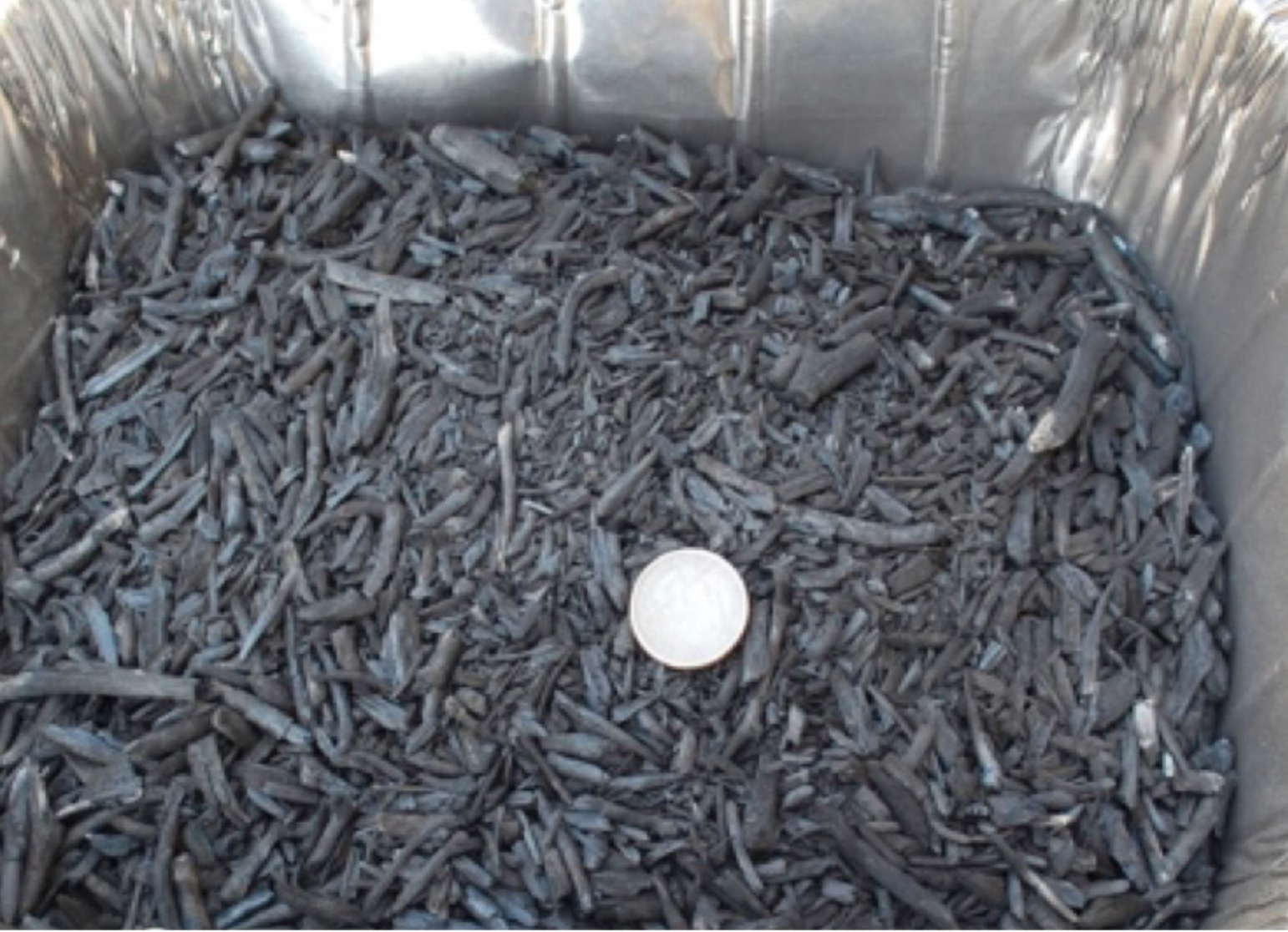 Using Biochar in the Garden - January 8, 2020 Jeff Schalau, Agent, Agriculture & Natural Resources University of Arizona Cooperative Extension, Yavapai County Biochar is a fine-grained charcoal left behind after pyrolysis of wood, crop residues, livestock manures, and other organic material used in alternative fuel production. Pyrolysis is the high temperature (500oC or 932oF) processing of organic materials in the absence of oxygen. Biofuel researchers initially regarded biochar as a waste product. However, upon further investigation scientists found that biochar is so slow to decompose that scientists widely consider it to be a long-term repository for stored carbon which could play a role in mitigating the effects of climate change. Biochar has recently gained the interest of gardeners and farmers due to its use by historic civilization. This use has been traced back 8,000 years in the Amazon Basin where it was used to transform highly weathered red soils lacking organic matter and biological activity into a rich black fertile soils. Similar uses of biochar by earlier civilizations are also found in Peru, Ecuador, West Africa, and Australia. Traditional techniques for the addition of charcoal (and ash) to soils was probably done with controlled burning of crop residues and/or local vegetation. Researchers have shown that biochar is similar to activated charcoal which can be used successfully to treat sewage and waste water. It is also exceptionally well suited for restoring degraded soils, such as those found near mining sites, because it tightly binds toxic heavy metals and neutralizes unnaturally acidic soils. When heated slowly for several hours it produces a lightweight, fine-textured, negatively charged biochar. Some information sources talk about making biochar at home and a knowledgeable person could probably do this. Other sources say homemade biochar can be produced under proper combustion temperatures and oxygen availability. All biochar is not created equal. According to Dr. Linda Chalker-Scott, Horticultural Specialist at Washington State University, “The science behind biochar is complex: there are many variables associated with both making and using biochar.” Each material used to make it gives it differing properties. Biochar made from straw is different than those made from coconut husks, yard waste, or wooden pallets. Also, the temperature at which it they are charred will create varying chemical and physical properties. In addition, biochar effectiveness is highly dependent on soil characteristics, such as texture, organic matter content, and mineral nutrient levels present. Biochar can also increase water-holding capacity of fast-draining, sandy soils. Biochar micropores provide spaces for beneficial bacteria and fungi to colonize and take refuge therefore hiding them from foraging protozoa such as amoebas. Plant pathogenic (plant harming) bacteria can also decrease when biochar is added to soil. Earthworm populations, however, often decline in biochar-amended soils, possibly due to pH changes or dehydration. Why use biochar? In studies, crops grown in biochar-amended soil have often shown increased growth. In addition to above listed benefits, other biochar benefits include improved drought tolerance and greater resistance to root and leaf diseases. At the same time, gardeners should be careful when using biochar. Application of too much biochar can injure plants, possibly by increasing soil alkalinity past the plant’s tolerance level. Also, applying biochar to soils rich in organic matter can temporarily reduce nitrogen levels because microbes will out-compete plants in sequestering this nutrient. There are good reasons to be excited about the possible benefits of biochar in home gardens. A solid body of peer-reviewed research is available that describes the benefits of adding biochar to crops, soils, and soil microorganisms. If you want to try biochar in your garden, you may choose a commercially available product or choose to produce it yourself. If you decide to use biochar, monitor your plants in the first few months for signs of nitrogen deficiency. As always, small experiments in your garden may help determine if biochar could benefit your soils. In closing, I invite readers with biochar experience to share their results with me through the feedback form on the Backyard Gardener website. I have included some additional biochar resources with the online edition (see URL below). You can follow the Backyard Gardener on Twitter – use the link on the BYG website. If you have other gardening questions, call or email the Master Gardener help line in the Prescott (928-445-6590/prescottmg@gmail.com) or Camp Verde (928-554-8992/verdevalleymg@gmail.com) and be sure to include your name, address and phone number. Find past Backyard Gardener columns or provide feedback at the Backyard Gardener web site: http://cals.arizona.edu/yavapai/anr/hort/byg/. Images  Homemade biochar with a quarter shown for scale (from: Guide to Making and Using Biochar for Gardens in Southern Arizona, by Artiola and Wardell, University of Arizona Cooperative Extension Publication AZ1752, 2017).
Homemade biochar with a quarter shown for scale (from: Guide to Making and Using Biochar for Gardens in Southern Arizona, by Artiola and Wardell, University of Arizona Cooperative Extension Publication AZ1752, 2017).Additional Resources Guide to Making and Using Biochar for Gardens in Southern Arizona, University of Arizona Cooperative Extension extension.arizona.edu/sites/extension.arizona.edu/files/pubs/az1752-2017.pdf Biochar in Colorado, Colorado State University Extension extension.colostate.edu/topic-areas/agriculture/biochar-in-colorado-0-509/ What Is Biochar and How Different Biochars Can Improve Your Crops, University of Tennessee Institute of Agriculture extension.tennessee.edu/publications/Documents/W829.pdf |